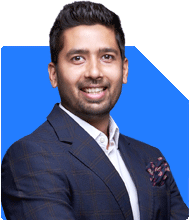Retired at 56 with 4 flats: How to maximize returns?
Ramalingam Kalirajan |10893 Answers |Ask -Follow
Mutual Funds, Financial Planning Expert - Answered on Jul 18, 2024
He has an MBA in finance from the University of Madras and is a certified financial planner.
He is the director and chief financial planner at Holistic Investment, a Chennai-based firm that offers financial planning and wealth management advice.... more

I m retired at 56, my savings 4 flats in mumbai, 2 I m staying with family of 6 people, wife, parents and 2 children, 2 can b sold or given on rent, FD 3 crores. Monthly family expenses 2 lacs, no loan. Suggest best way to invest to maximise returns
Flats in Mumbai: 4 (2 occupied, 2 available for sale/rent)
Fixed Deposits (FD): Rs 3 Crores
Monthly Expenses: Rs 2 Lakhs
No loans
Financial Goals
Maximise returns on existing assets
Generate sufficient income to cover monthly expenses
Ensure financial security for the family
Investment Strategy
To meet your financial needs and maximise returns, a balanced and diversified investment approach is recommended.
Rental Income from Flats
Option 1: Rent Both Flats
Renting out both flats can provide a steady income. In Mumbai, rental income can be substantial, providing a reliable cash flow to cover expenses.
Option 2: Sell One Flat, Rent One Flat
Selling one flat can provide a significant lump sum for investment, while renting the other ensures steady monthly income.
Fixed Deposits and Debt Instruments
Fixed Deposits
Continue with Rs 1 Crore in fixed deposits for stability and liquidity. FD rates are lower but provide safety and regular interest.
Debt Funds
Invest Rs 1 Crore in high-quality debt funds or bond funds. They offer better returns than FDs and are relatively safe.
Equity Investments
Equity Mutual Funds
Invest Rs 50 Lakhs in a diversified portfolio of equity mutual funds, including large-cap, mid-cap, and multi-cap funds. These funds provide growth potential over the long term.
Dividend Yield Funds
Invest Rs 50 Lakhs in dividend yield funds or high dividend-paying stocks for regular income along with capital appreciation.
Real Estate Investment Trusts (REITs)
REITs
Consider investing in REITs with Rs 50 Lakhs. REITs provide exposure to real estate without the hassle of property management and offer regular income.
Emergency Fund
Emergency Fund
Keep Rs 50 Lakhs in a high-interest savings account or liquid fund. This ensures liquidity for unforeseen expenses.
Regular Income Strategy
Monthly Income Plan
Set up a monthly income plan with a mix of rental income, interest from FDs, dividends from equity investments, and returns from debt funds. This diversified income approach ensures stability and reduces risk.
Monitoring and Rebalancing
Regular Review
Review your investment portfolio periodically. Adjust based on market conditions and changes in financial needs.
Tax Efficiency
Tax Planning
Invest in tax-efficient instruments. Use tax benefits available under various sections of the Income Tax Act to minimise tax liability.
Final Insights
Financial Security
Ensure you have adequate health and life insurance. This protects your family’s financial future.
Professional Advice
Consider consulting a Certified Financial Planner for a detailed and personalised financial plan.
Best Regards,
K. Ramalingam, MBA, CFP,
Chief Financial Planner,
www.holisticinvestment.in
You may like to see similar questions and answers below
Kirtan A Shah | Answer |Ask -Follow
MF Expert, Financial Planner - Answered on Nov 01, 2023
Sunil Lala | Answer |Ask -Follow
Financial Planner - Answered on Nov 05, 2023
Ramalingam Kalirajan |10893 Answers |Ask -Follow
Mutual Funds, Financial Planning Expert - Answered on Nov 25, 2024
Ramalingam Kalirajan |10893 Answers |Ask -Follow
Mutual Funds, Financial Planning Expert - Answered on Jul 09, 2025
Ramalingam Kalirajan |10893 Answers |Ask -Follow
Mutual Funds, Financial Planning Expert - Answered on Dec 15, 2025
Ramalingam Kalirajan |10893 Answers |Ask -Follow
Mutual Funds, Financial Planning Expert - Answered on Dec 15, 2025
Radheshyam Zanwar |6746 Answers |Ask -Follow
MHT-CET, IIT-JEE, NEET-UG Expert - Answered on Dec 15, 2025
Ramalingam Kalirajan |10893 Answers |Ask -Follow
Mutual Funds, Financial Planning Expert - Answered on Dec 15, 2025
Ramalingam Kalirajan |10893 Answers |Ask -Follow
Mutual Funds, Financial Planning Expert - Answered on Dec 15, 2025
Ramalingam Kalirajan |10893 Answers |Ask -Follow
Mutual Funds, Financial Planning Expert - Answered on Dec 15, 2025
Samraat Jadhav |2508 Answers |Ask -Follow
Stock Market Expert - Answered on Dec 15, 2025
Ramalingam Kalirajan |10893 Answers |Ask -Follow
Mutual Funds, Financial Planning Expert - Answered on Dec 15, 2025
Reetika Sharma |425 Answers |Ask -Follow
Financial Planner, MF and Insurance Expert - Answered on Dec 15, 2025
Radheshyam Zanwar |6746 Answers |Ask -Follow
MHT-CET, IIT-JEE, NEET-UG Expert - Answered on Dec 15, 2025
























